The oil and gas industry is one of the segments of the global supply chain of energy which is made of several segments and all of them are important in the provision of energy. One of these critical segments is the midstream sector, which is a segment that is very crucial in the transportation, processing, and storage of hydrocarbons from the production point to the consumer market. This guide will also serve as an introduction to the midstream oil and gas industry, its functions, facilities, and role in the global economy.
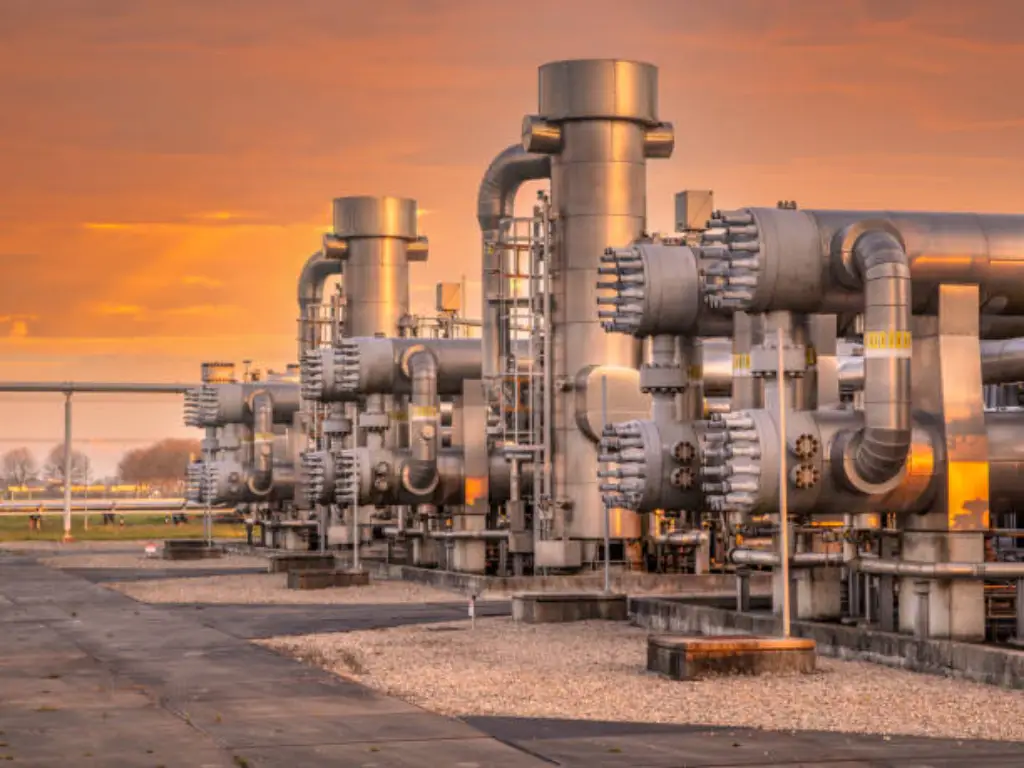
Overview of the Oil and Gas Industry
The oil and gas industry is traditionally divided into three primary segments: Upstream, midstream, and downstream. The upstream segment is the first segment of the value chain and is also referred to as the upstream oil and gas industry; this segment engages in the extraction of crude oil and natural gas from subterranean reservoirs. The downstream is the distribution, marketing, and refining of petroleum products including gasoline, diesel, and kerosene to the consumers.
However, the midstream segment has a very important role in the transportation, processing, and storage of hydrocarbons in a way that the upstream extracted raw materials can be transported to the downstream refineries and petrochemical industries.
The midstream sector is one of the most important segments of the oil and gas industry because it is the process of transportation of hydrocarbons over long distances in a safe, efficient, and reliable manner. The midstream segment is very crucial in the energy supply chain because it is the segment that connects the wellhead where crude oil and natural gas are produced and the refineries or consumers. It also assists in the conservation of the quality of hydrocarbons and eradicating undesirable components such as carbon dioxide and water before they get to the downstream facilities.
Key Differences Between Midstream, Upstream, and Downstream
| Aspekt | Upstream | Midstream | Nachgelagert |
| Main Focus | Exploration and production of hydrocarbons | Transportation, processing, and storage | Refining and distribution of end products |
| Primary Activities | Drilling and extraction Seismic surveys and geological analysis | Pipeline operation and maintenance Gas processing and fractionation | Refining crude oil into products Distributing to retail and industrial markets |
| Operational Focus | Geological and engineering challenges | Logistics and infrastructure management | Marketing, sales, and distribution |
| Regulatory Environment | High environmental and safety standards | Focused on safety, environmental impact, and tariffs | Stringent product quality and safety standards |
| Economic Conditions | High-risk, high reward | Stable, fee-based revenue models | Sensitive to market demand and price fluctuations |
Core Activities in the Midstream Sector
The transport, processing, and storage of crude oil, natural gas, NGLs, and other hydrocarbon products are some of the most significant operations in the midstream oil and gas industry. These activities take place between upstream production and downstream refining and distribution. The midstream sector is defined by three main activities:
Hydrocarbons Gathering, Processing, And Transportation
Gathering: After the extraction of crude oil or natural gas by the upstream sector, these raw materials have to be collected for further transmission into processing plants. This process uses ‘gathering pipelines’ that bring together numerous wellheads to collect the unprocessed hydrocarbons. At this stage, the hydrocarbons remain largely untreated with certain impurities present like water, carbon dioxide, and hydrogen sulfide.
Processing: In collection centers, for example, gas is purified through the expulsion of unwanted substances from it a process known as gas processing or separation. The objective is to take out contaminating substances from natural gas and break them down into different constituents such as methane; ethane; propane; and butanes among others. Some of these components have unique applications such as methane which is widely used in electricity generation and heating while ethane; propane and butanes are major petrochemical feedstock.
Transportation: Once processed, hydrocarbons need to be transported to refineries, storage facilities, or export terminals depending on their location:
- Pipelines: They are commonly employed because they carry large amounts of hydrocarbons over long distances at a low cost.
- Railroad And Trucking Transport: Rail cars or trucks are used where there are no pipelines available (or practicable), particularly for smaller lots of liquefied petroleum gases (LPG) among others.
- Marine Transport: Oil tankers and barges are essential especially when it comes to international trade involving overseas transportation.
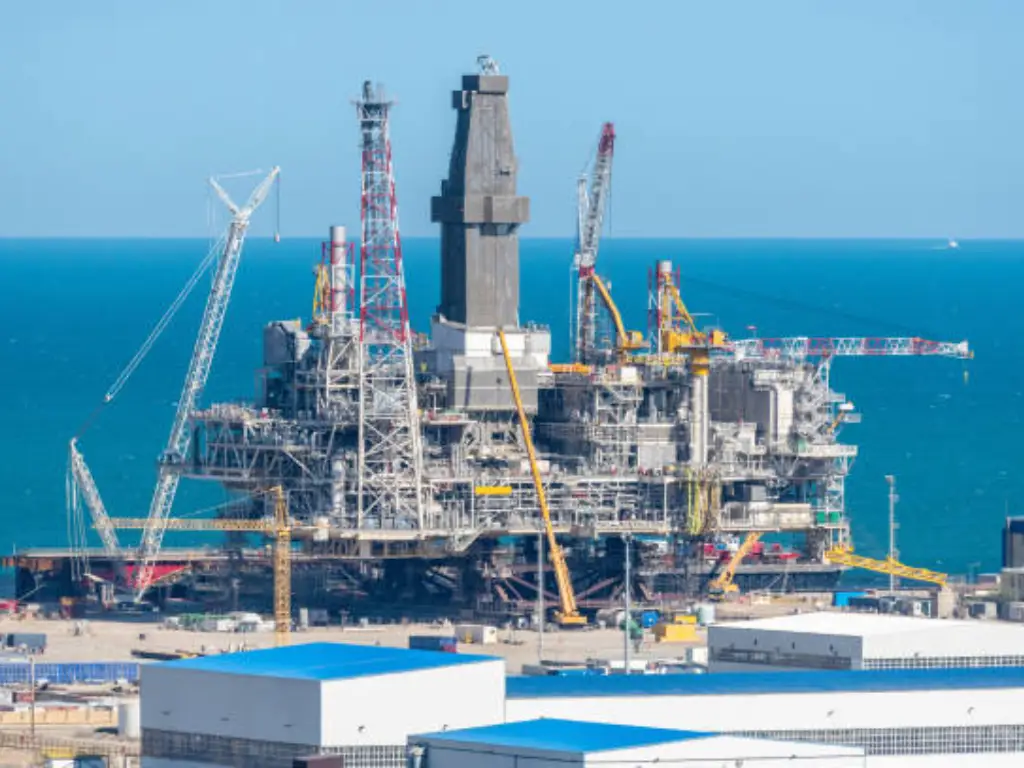
Storage Facilities for Crude Oil, Natural Gas and NGLs
Storage systems are very important in midstream and act as a buffer to ensure a steady supply of hydrocarbons even when production levels fluctuate or demand spikes. They are not just holding areas but facilities designed to accommodate large volumes of hydrocarbons safely and prevent leakages or environmental contamination.
Types of storage facilities:
- Tank farms: These containers hold crude oil, gasoline, and diesel among other refined products in huge storage tanks. Tank farms are fitted out with safety and monitoring equipment to forestall incidents such as leaks or fires.
- Underground caverns: These caverns usually occur in salt formations or empty reservoirs used for storing natural gas. Massive amounts of natural gas can be kept inside them so that it is readily available as market demand increases.
- Terminals: Terminals serve as points where oil runs between different modes like pipelines ships, or railcars. Additional storage capacity at terminals is often intended to manage the flow of raw materials between transportation networks while ensuring prompt delivery into markets.
Distribution And Marketing Of Resources
After processing and storing hydrocarbon resources, midstream companies have the responsibility of making sure they reach downstream refiners and end users within the required time frame. This involves logistics management, optimization of transport routes, and working with various stakeholders to achieve timely and cost-effective delivery of hydrocarbons.
Midstream companies also engage in hydrocarbon marketing by negotiating contracts with upstream producers and downstream customers; establishing long-term transport agreements; and offering storage services among others. Many such contracts have relatively stable fee-based revenue streams which guarantee steady cash flows for midstream entities as well as assuring both producers and consumers concerning their supplies’ continuity.
Midstream Infrastructure and Assets
The infrastructure, as well as assets in the midstream sector, are responsible for a good flow of hydrocarbons that allow them to be transported and processed safely across borders at production sites before reaching the consumers.
Pipelines: The Backbone of Midstream
The midstream industry largely depends on pipelines which remain the most cost-effective means of transporting large quantities of hydrocarbon products such as crude oil, natural gas, and NGLs over long distances. The pipes are engineered to handle high pressures, thus ensuring safety while allowing gas resources from production areas to continuously move into processing plants or storage facilities, as well as export terminals. Pipelinings form a network that supports both domestic distribution and cross-border trade; therefore acting as the backbone for midstream infrastructure and assets.
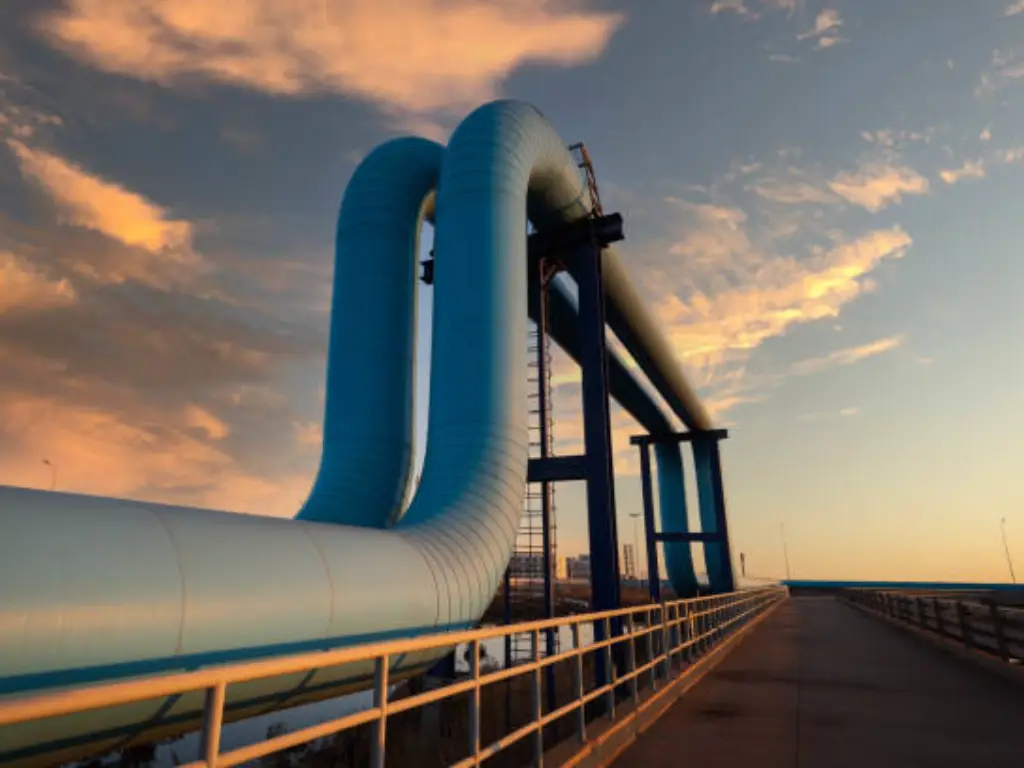
Storage Facilities and Terminals
Storage facilities and terminals are key components of midstream infrastructure that help cope with fluctuations in supply and demand. These strategic reserves mitigate potential risks related to either production or transportation disruptions. Situated near major producing regions, along pipeline networks, or at export terminals, storage assets guarantee flexibility and reliability in supply chain operations. Examples include above-ground tank farms or underground storage caverns but also export terminals with capacity to store large volumes of hydrocarbons securely.
Role of Railways, Tucks, and Ships in Transportation
Railways, trucks, and ships play pivotal roles within the midstream segment especially where there’s hardly any existing pipeline infrastructure apart from railways. Railcars have become very important when it comes to moving crude oil and NGLs across areas where no pipelines interconnect them. Trucks play an important role when it comes to refined products because they offer flexible transport options over short distances.Tanker ships form an integral part of international transportation thereby making it possible for crude oil together with natural gas to be traded globally since they link up countries where they are being produced with other global markets for these resources.
Functions of Compression & Fractionation Facilities
Compression and fractionation facilities form part of specialized midstream assets that optimize the transportation and processing of hydrocarbon resources. To enable the efficient movement of natural gas in long pipelines, compression facilities are used to increase pressure. Fractionation facilities, however, are employed to separate mixed NGL streams into single components such as ethane, propane, butanes, and natural gasoline. These components are then distributed depending on their specific market demands to ensure the optimal usage of each resource.
Safety and Efficiency in Midstream Operations
In midstream operations, safety and efficiency are extremely important because the focus is on transporting, processing, or storing hydrocarbons securely. Here’s a concise overview of how these goals are achieved:
- Pipeline Safety and Integrity
To avoid accidents, maintaining pipeline integrity is crucial. Midstream companies use sophisticated pipeline integrity management systems (PIMS) to inspect pipelines for corrosion, cracks, and other defects. Techniques such as smart pigs and remote monitoring allow real-time surveillance and prompt response to potential problems Regular inspections and maintenance as required by PHMSA ensure pipeline safety.
- Efficient Transportation and Environmental Protection
Pipelines represent the most efficient means of transport but when alternatives like rail, truck, or ships are used efficiency plus environmental concerns become paramount. Companies optimize routes and use technologies that reduce emissions such as energy-efficient compression stations or double-hulled tankers. These measures make transportation more efficient while still being responsible for the environment.
- Regulatory Compliance and Environmental Stewardship
FERC and PHMSA set strict regulations governing midstream operations. Consequently, these rules regulate aspects like hydrocarbon storage operation as well as pipeline construction thus ensuring safety together with care for the environment. To minimize environmental hazards companies also observe best practices such as re-routing pipelines from sensitive regions into areas that have spill containment technology.
- Advanced Monitoring and Automation
Both safety and efficiency are enhanced through advanced monitoring technologies plus automation. Real-time data analytics facilitate predictive maintenance so that possible issues can be resolved before they worsen too much. Drones along with remote sensors improve inspection accuracy in difficult-to-reach locations especially when operational parameters are fine-tuned using automated systems.

- Emergency Response And Risk Management
Emergency response plans (ERPs) are vital in dealing with incidents such as spills or pipeline ruptures. Such plans involve regular training sessions alongside coordination with local authorities Risk-based inspection among other risk management strategies prioritizes resources where it’s mostly required by focusing on high-risk areas to prevent accidents.
Economic and Technological Impact of Midstream
The midstream sector is one of the significant players in the oil and gas industry because its activities have considerable economic implications on the overall outcome, as well as technological advancements. Through its provision of critical infrastructure for hydrocarbon transportation, processing, and storage, midstream guarantees the smooth running of downstream activities concerning upstream operations. This uninterrupted supply forms a basis for the stability and growth of the entire industry; therefore, this makes the midstream segment a key component of economic value within the energy, ensuring that all processes meet high-quality standards.
In terms of economics, significant revenue generation plus investment opportunities are derived from the midstream industry. Construction or expansion projects for pipelines, storage facilities, and processing plants not only create direct financial returns but also boost economies through job creation and local procurement. Often these projects require highly skilled labor resulting in good quality jobs being created especially in engineering, construction, and operations around regions with a lot of activity in midstream. In addition to supporting local economies, this type of employment ensures long-term economic stability in energy-producing regions.
Technologically, the midstream sector is leading innovation by adopting new technologies that enhance operational efficiency besides safety plus environmental stewardship since it supplies materials that make transport more efficient while still being responsible to nature. The development has seen major changes thus making it possible to transport oil products easily through automated pipeline systems. Due to these improvements, shipping costs were reduced significantly resulting in a more reliable system that will be less damaging to the environment even as demand increases under strict regulations concerning security and eco-friendliness.
Midstream’s Future and Its Global Influence
The midstream sector is facing an important moment in which it must adapt to a global shift towards cleaner energy and more stringent regulations. The shift to low-carbon solutions that the world is moving towards makes it necessary for midstream companies to invest in alternative fuel infrastructure such as hydrogen and renewable natural gas, which facilitates their transportation and storage mechanisms. This transition is crucial given the evolution of conventional energy systems.
Simultaneously, the industry faces heightened regulatory scrutiny, particularly in environmental and safety standards. For instance, the United States Pipeline and Hazardous Materials Safety Administration (PHMSA) have set rules requiring improved leak detection systems while under the Environmental Protection Agency (EPA), stricter emission controls are required of companies. In Europe, the European Union’s Green Deal with its concomitant regulations are pushing midstream operators to reduce methane emissions and enhance energy conservation. Compliance demands real-time monitoring systems integrated into enhanced pipeline integrity programs and more rigorous environmental impact assessments among others.
However, even with these challenges midstream infrastructure still plays a critical role in global energy supply. As demand for energy rises especially in developing regions, it will become essential for the sector to efficiently transport both traditional hydrocarbons as well as emerging sources of power. The future of this industry lies in whether it can meet these regulatory requirements without compromising on the reliable flow of safe world energy resources.
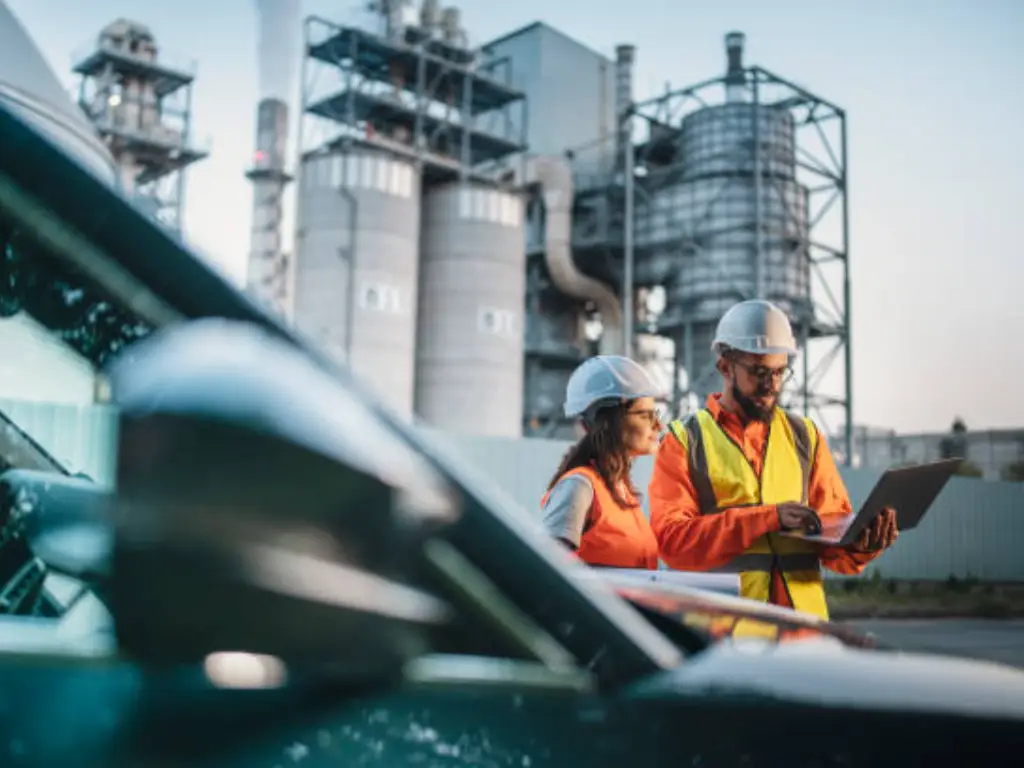
Major Players and Business Models in the Midstream Sector
Midstream oil and gas space is dominated by large players who play significant roles in global energy infrastructure. These players have extensive networks of pipelines, storage facilities, and processing plants that enable them to transport hydrocarbons efficiently.
Major Players
- TC Energy:
TC Energy is one of North America’s leading firms that operates expansive crude oil pipelines along with natural gas pipelines complemented by substantial storage and processing capabilities.
- Kinder Morgan:
The largest infrastructural company Kinder Morgan has an extensive pipeline network and storage system that handles several hydrocarbons including natural gas and refined products.
- Enterprise Products Partners:
North America-focused Enterprise Product Partners is responsible for a comprehensive pipeline network and storage facilities, which are designed to control the movement of natural gas liquids (NGLs).
Business Models
- Fee-Based Business Models:
Midstream companies typically operate under fee-based business models, which provide them with stable and predictable revenue streams. To manage the high capital costs required to build, own, and maintain extensive infrastructure networks such as pipelines, processing plants, and storage facilities, these models play a crucial role. These elements form an integral part of these business models:
- Fee-Based Revenue:
Revenues from midstream companies arise out of fees charged to oil and gas producers for the transportation, processing, and storage of hydrocarbons. With the charges being based on either processed or transported volumes of hydrocarbon, this model provides a steady income flow that is less dependent on commodity price shifts. Due to the financial stability it provides to investors this model has become popular among midstream players.
- Long-Term Contracts:
A significant portion of midstream revenue comes from long-term contracts such as transportation agreements, processing contracts, and storage leases. Typically spanning several years with fixed fees for services provided these contracts guarantee cash flows that can be relied upon by the midstream companies in their operations besides financing capital expenditures.
- Take-or-Pay Agreements:
In the midstream sector, you will find take-or-pay contracts. The producers are obliged to pay for a minimum level of service even if they do not use the full capacity. This reduces risks for midstream companies ensuring constant revenue streams even in shrinking production by producers.
- Expansion and Capital Investment
Midstream companies must continuously increase their infrastructure with investment to meet rising energy demand. For example, this involves developing new pipelines, increasing storage capacities, and upgrading processing facilities. These investments are usually backed by long-term contracts that ensure they generate returns over time.
- Diversification of Services:
Currently, many mid-stream firms offer more services than transportation and storage. For instance, these services include value-addition to natural gas liquids (NGLs) such as fractionation into its components, hydrocarbon marketing and trading, and renewable energy infrastructure investment among others. Such diversification helps in guarding against risks associated with sole reliance on traditional hydrocarbon markets alone.
Case Studies: Some Significant Midstream Projects
Keystone Pipeline System
North America’s Keystone pipeline system is among the most important midstream projects, which was developed for moving crude oil from the Canadian province of Alberta to refineries in the U.S. Gulf Coast. This pipeline plays a major role in connecting Canadian oil resources with significant U.S. markets hence enhancing energy security and market stability in this region.
Nevertheless, the Keystone venture has faced considerable environmental and regulatory difficulties. These concerns about possible oil spills, greenhouse gas emissions, and effects on indigenous lands have led to litigation and delays. Nonetheless, while highlighting the essential role played by midstream infrastructure in meeting North America’s energy requirements it also shows that careful thought must be given to environmental as well as social consequences.
Permian Highway Pipeline
The Permian Highway Pipeline (PHP) is another key midstream project transporting natural gas from West Texas’ Permian basin to the Gulf Coast. The Permian Basin is among the most prolific United States regions in terms of both oil and gas production; thus, there is a need for efficient infrastructure capable of distributing natural gas to processing plants and shipping terminals.
The PHP provides relief by addressing bottlenecks and ensuring that natural gases are transported expeditiously without flaring hence supporting the United States’ position as a top exporter of liquefied natural gases (LNG). Similarly, it raises concerns over community health and environmental impacts when developing infrastructures, especially for high-producing areas.
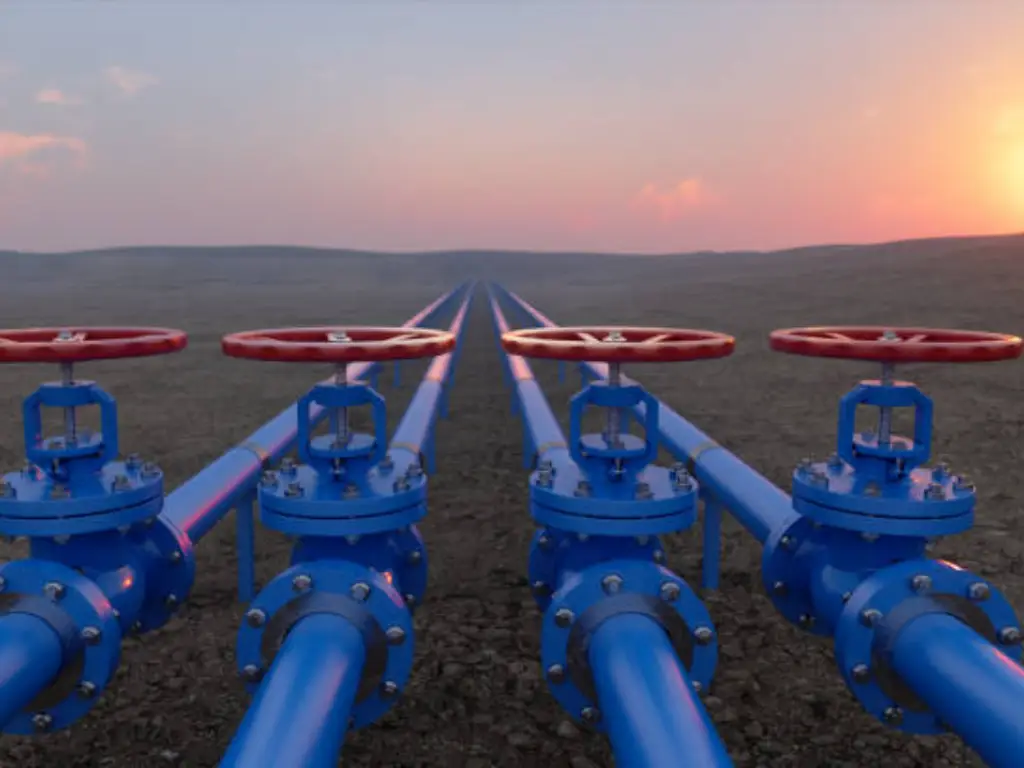
Mariner East Pipeline System
The Mariner East pipeline system comprises multiple pipelines that carry NGLs such as propane, ethane, and butane between Appalachian Basin’s Marcellus and Utica shale plays towards export terminals including Pennsylvania industrial hubs. Consequently, this system serves a crucial purpose of linking the area’s abundant NGL reserves with local and international markets.
For instance, on the East Coast where the majority of petrochemical industries are located, it supports their operations by ensuring that the country has enough NGLs for manufacture and export. Despite this, there have been contests on the safety and environmental risk of this project by local communities which demonstrates the ongoing tradeoffs between infrastructure development and public concerns.
Schlussfolgerung
The midstream sector in the oil and gas industry is a critical part of the global energy supply chain whereby hydrocarbons produced upstream reach downstream refineries as well as markets. Midstream operations are responsible for the safe and efficient transportation, processing, and storage of crude oil, natural gas, and NGLs through complicated networks of pipelines, storage facilities as well as processing plants. As the industry grows, midstream will continue to play a key role in meeting worldwide energy demands while promoting a move toward cleaner forms of energy.
Maximizing Midstream Efficiency with DomBor Valve Solutions
DomBor has been an industry leader since 2001 with their superior pipeline valves that conform to strict guidelines such as API 6D or ISO 14313. All our valve types are customized to suit optimal media control; thus equipped, they feature hard-metal seals for corrosives versus elastic soft seals for clean media. We support you round-the-clock via our versatile product range built around solid construction with valves conforming to global safety standards beyond doubt.DomBor operates across more than 160 nations globally while providing reliable two-year warranties on all its products hence making it among the most affordable valve vendors capable of boosting pipeline operations’ efficiency easily.









